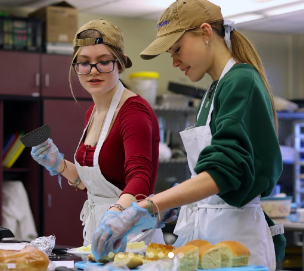The Next Step of Implementation: We Were Almost There
Written by: Brandi Krahulik, Shawnee Mission School District
As teachers, we are always looking for ways to improve the way we teach, not only to interest students but also to inspire them. We also constantly work to convince our students that they will use the skills we are teaching them later in life, but for some reason, they never believe us! And if we’re being honest, they may not always use what we teach them. However, that is changing. Through client-connected projects, teachers have found a way to not only keep our students interested and even inspired but also teach them skills that are relevant in the real world.
When our team of six FACS teachers first met, they shared the many purposeful, relevant, and engaging projects they do with their students. Of course, teaching projects that develop real-world skills are nothing new to us. However, our recent focus has been considering how we can push these amazing projects just a little further. Our solution is to move beyond “client scenarios,” enhancing these projects by allowing students to work with real clients.
Tina, one of our FACS teachers, explains, “Often in FACS, we use client scenarios but not real clients. Having students work with real clients on certain projects allows students to grow not just in knowledge, but as a whole person and future professional.”
Tina Tillotson, Blue Valley FACS Teacher
“We were almost there! We had the right idea, [we] just needed to pivot a bit” was our mantra. Madison who teaches fashion, apparel, and interior design implemented a project that allows students to redesign a space within their school. Through this project, students learn to manage working and communicating in groups, create deadlines and maintain budgets, document their experiences in interior design, and create a portfolio to demonstrate their skills. It was an incredible project on its own, but this year, Madison improved it by finding a client whom the students can work with to create this space. Through the project, Madison hopes students will now be able to see connections between classroom knowledge and real-world scenarios, enjoy hands-on experiences, develop their communication skills, and create professional work that can be used in their portfolios.

When we first met Tina, she explained that she’s always rolled out projects that require students to create menus or menu items, figure out their costs, and create prototypes, but she has never made them client-connected projects. However, this year, she is having her students work with McLain’s Bakery to create an item that will be featured on their menu at one of their locations. The students will create a budget for the menu item and a prototype that they will pitch to McLain’s. In addition, McLain’s has offered to donate a percentage of the proceeds to the school.
Our team has had some amazing ideas on how to enhance what teachers are already doing in class to create more client-connected projects. Teachers who have completed their projects or are in the process of doing so have already seen more buy-in from their students, who now better appreciate the value and real-world applications of the skills they learn in class.
